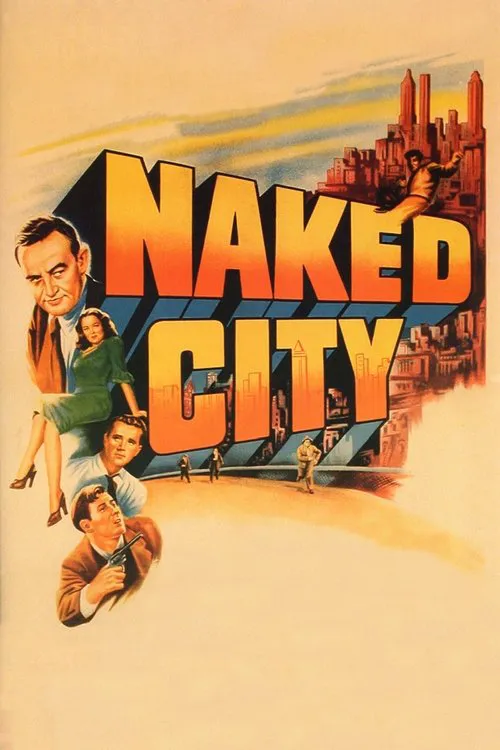The Naked City

Plot
In a city where everyone knows everyone else's business, the seemingly unbridgeable gap between rich and poor is only exacerbated by the stark contrast in their living arrangements. The glittering skyscrapers of Manhattan tower above the cramped, dimly-lit tenements of the Bowery, a world apart from the high-society apartments where some of the city's most famous women reside. It is here, amidst the concrete canyons and bustling streets of New York City, that Detective James Halloran and Lieutenant Dan Muldoon find themselves navigating a web of deceit and corruption that will challenge everything they think they know about the city and its people. The Naked City, directed by Jules Dassin and released in 1948, is a groundbreaking police procedural that redefines the genre by eschewing the glamour and mystique that often surrounds it. Instead, the film plunges viewers into the gritty, unromanticized reality of a metropolis struggling to cope with the aftermath of World War II. The crime at the heart of the story is the murder of a former model, Jane Martin, whose body is discovered in her posh Fifth Avenue apartment, her face submerged in the bathtub. The film's unique approach to storytelling is evident in its use of a non-linear narrative structure, which reflects the fragmented and disjointed nature of the investigation. As Detective Halloran and Lieutenant Muldoon work to piece together the events surrounding Jane's murder, the audience is presented with a series of interlocking scenes and vignettes that reveal a city of secrets and lies. The police duo's probing of Jane's past and her circle of acquaintances becomes a journey into the underbelly of Manhattan, where the veneer of respectability is thinly veiled and the city's darker impulses are all too evident. The Naked City is also notable for its innovative use of location shooting, which adds to the film's gritty realism. Shot on location in New York City, the movie brings the city's streets and its people to life in a way that feels fresh and unpolished, eschewing the artificial sets and backlots that were the norm for most films at the time. The result is a film that feels authentic and unvarnished, a true testament to the power of location shooting to capture the essence of a place and its people. One of the film's greatest strengths is its portrayal of the two main characters, played by Barry Fitzgerald and Don Taylor, respectively. As Lieutenant Muldoon and Detective Halloran delve deeper into the case, their rapport and camaraderie become increasingly apparent, providing a welcome respite from the darkness and cynicism that permeate the story. Their partnership represents a beacon of hope in a city that often seems hopeless, a testament to the power of human relationships to transcend even the most difficult circumstances. As the investigation unfolds, the police duo's pursuit of the truth is constantly hampered by the city's bureaucratic machinery and the entrenched interests of those they suspect. In a city where corruption is rife and the rule of law is often bent or broken, Halloran and Muldoon must navigate a maze of red tape and deceit to uncover the truth behind Jane's murder. Their journey takes them down dark alleys and deserted side streets, into the hearts of Manhattan's most notorious crime-ridden slums, and to the doorsteps of the city's most powerful men and women. Throughout The Naked City, Jules Dassin's direction masterfully weaves together disparate threads and elements, creating a cohesive and compelling narrative that remains gripping to this day. The film's themes of crime, corruption, and the decay of a great city are timeless and universal, speaking to audiences around the world about the darker aspects of human nature and the power of corruption to destroy even the most seemingly civilized communities. In the end, The Naked City is a film that is as much about the city itself as it is about the crime that unfolds within it. It is a film that captures the unique spirit and character of New York City during a pivotal moment in its history, and it is a testament to the enduring power of cinema to reflect the complexities and contradictions of human experience.
Reviews
Recommendations




